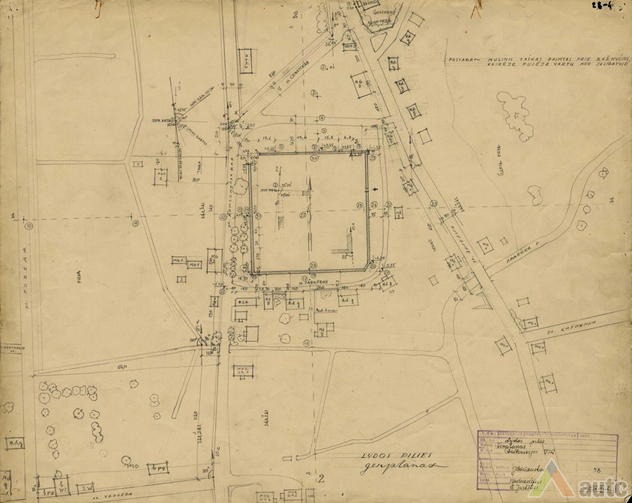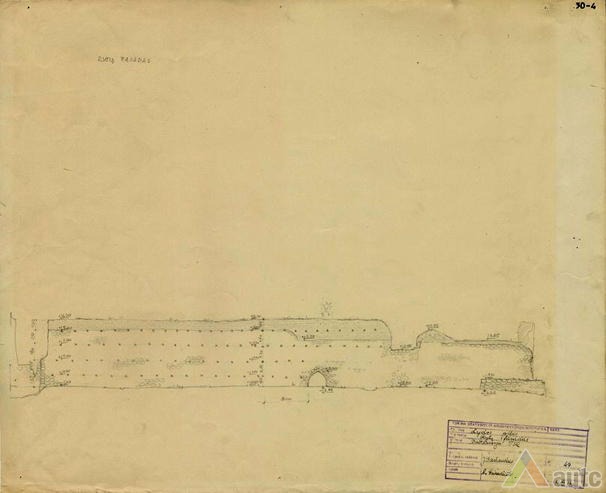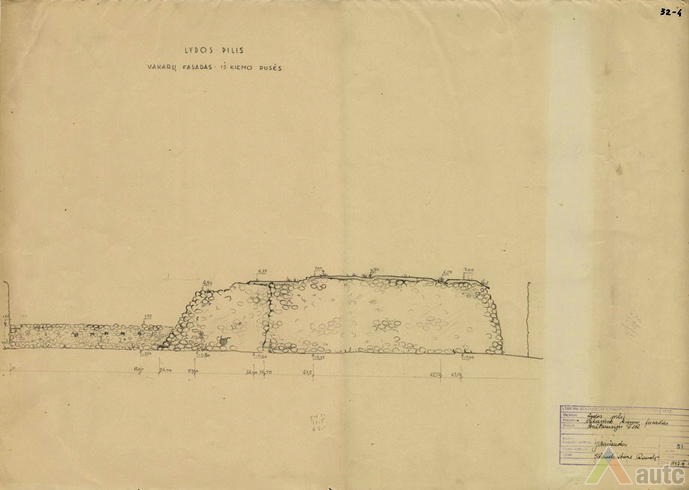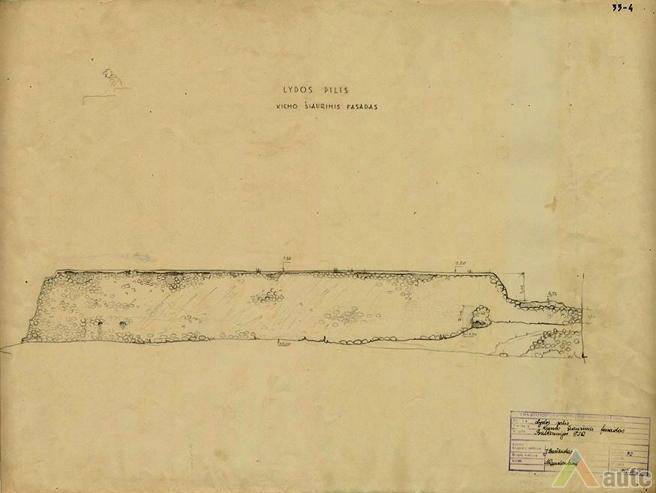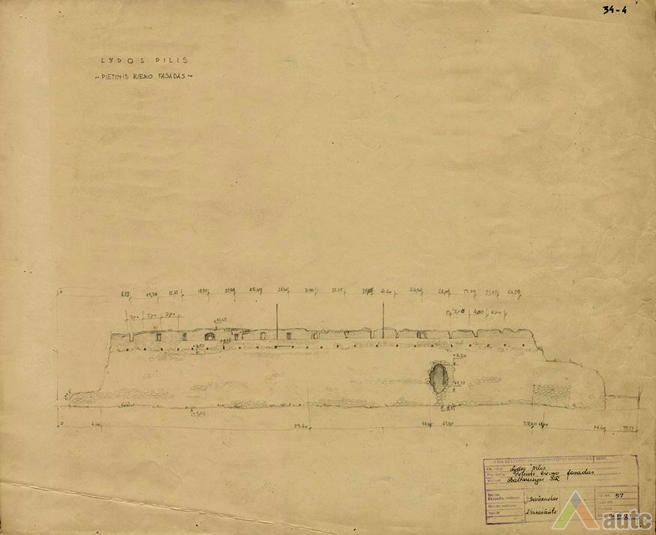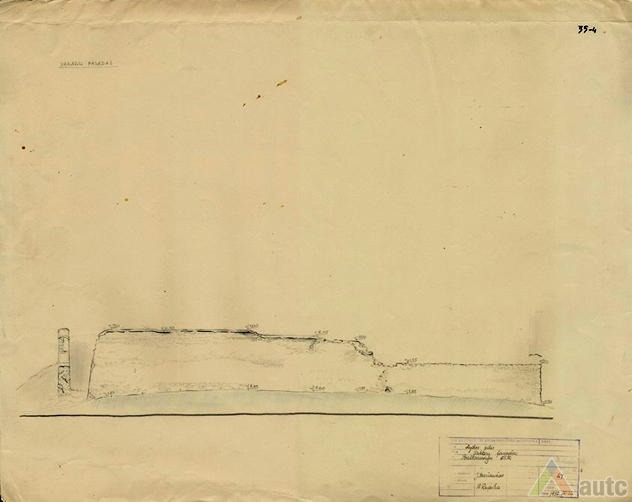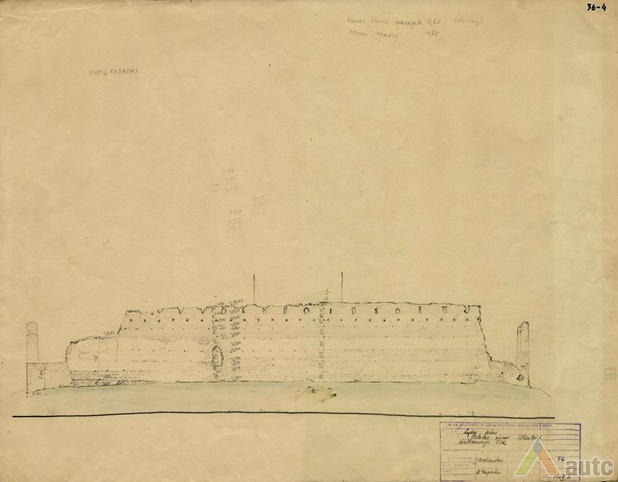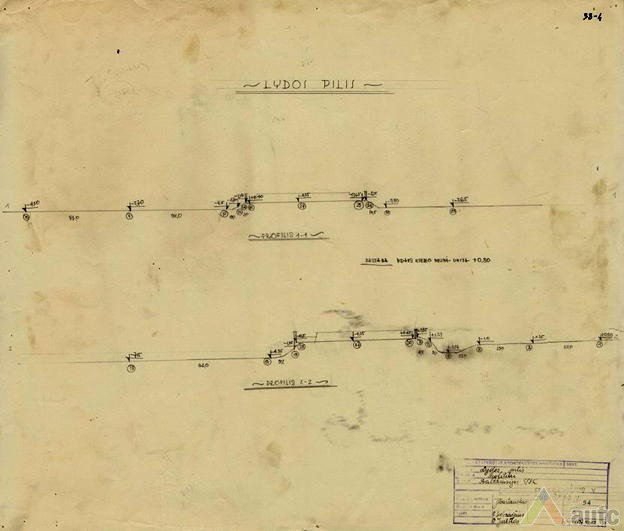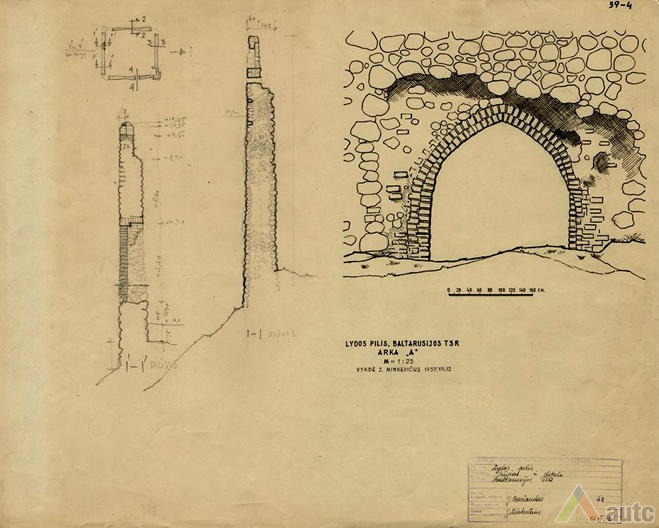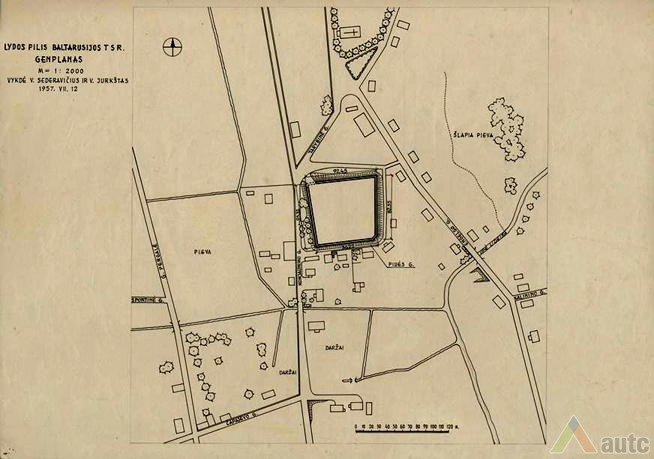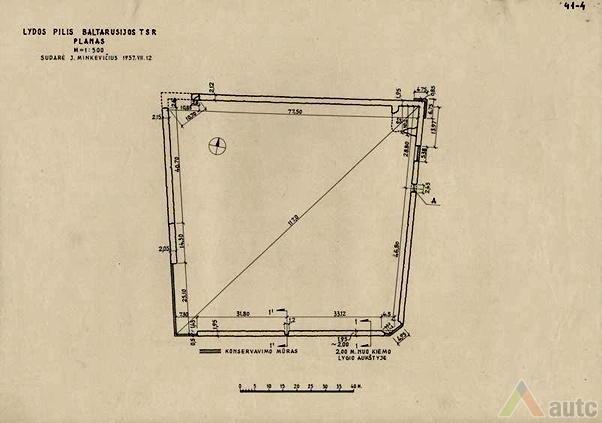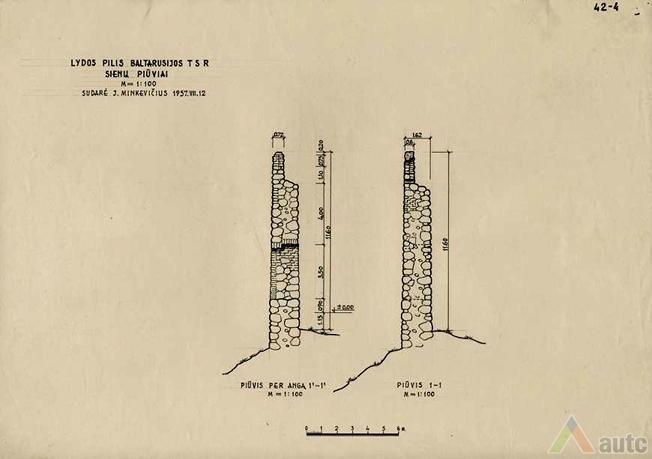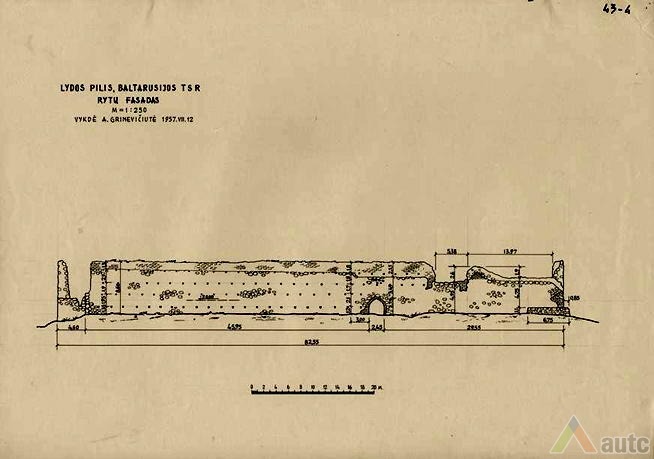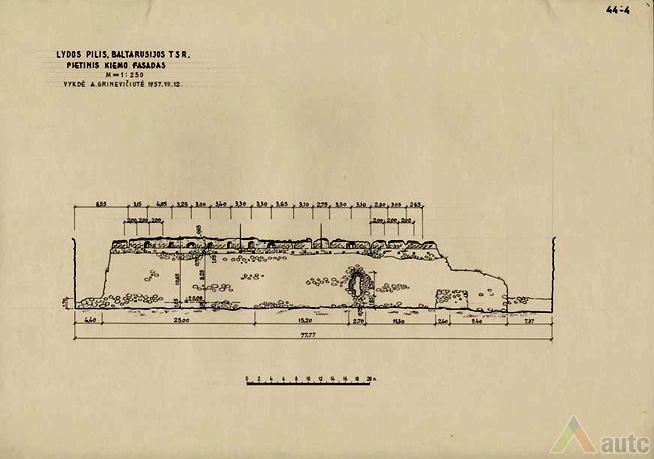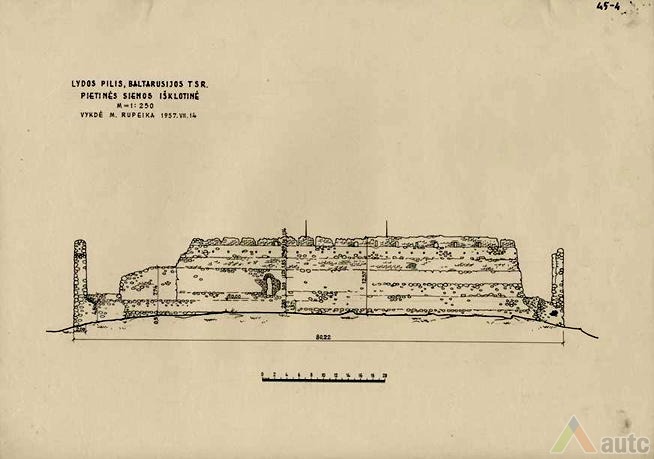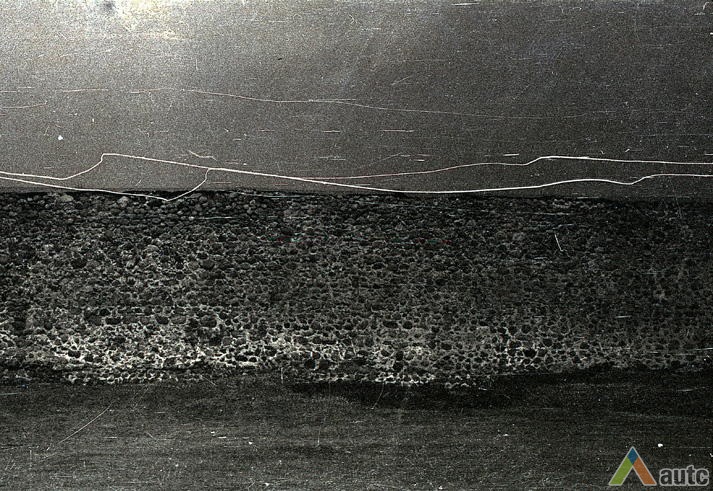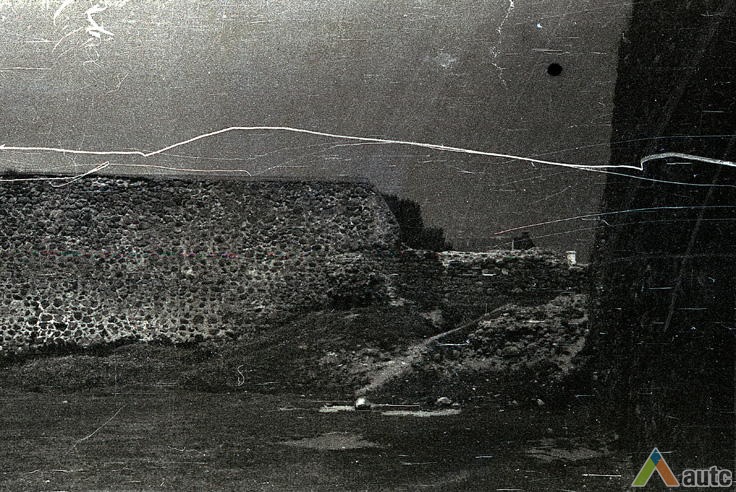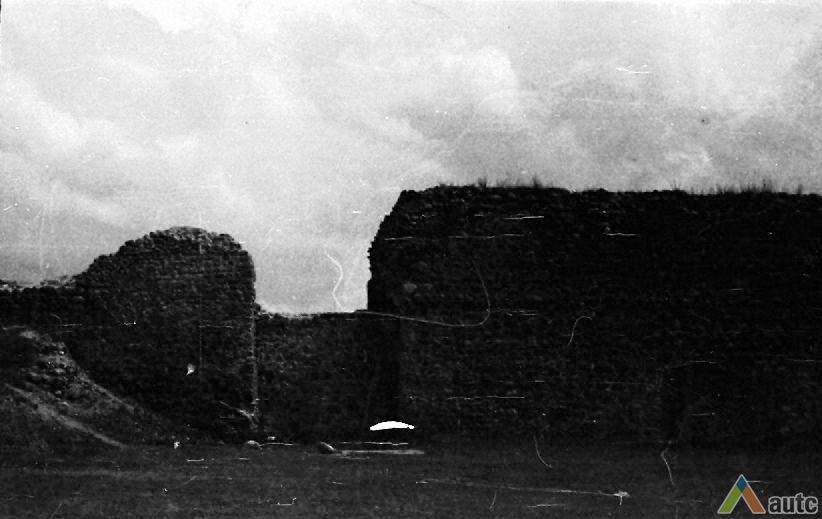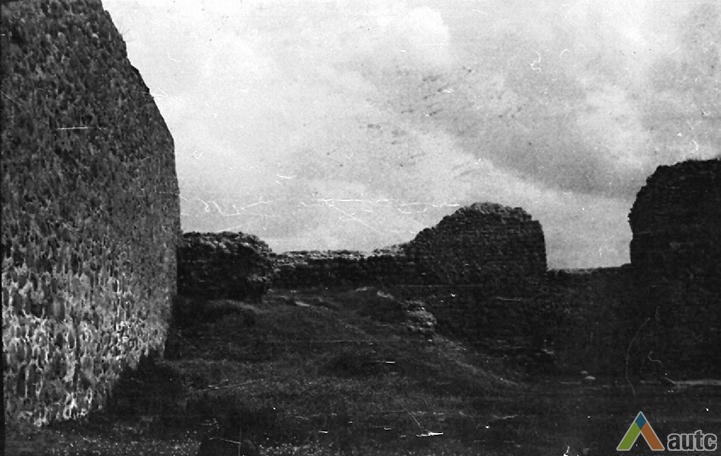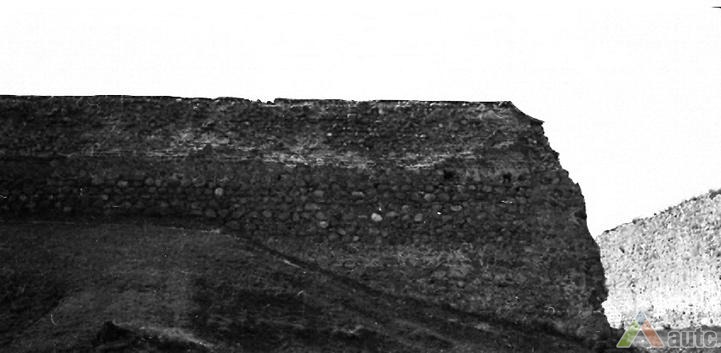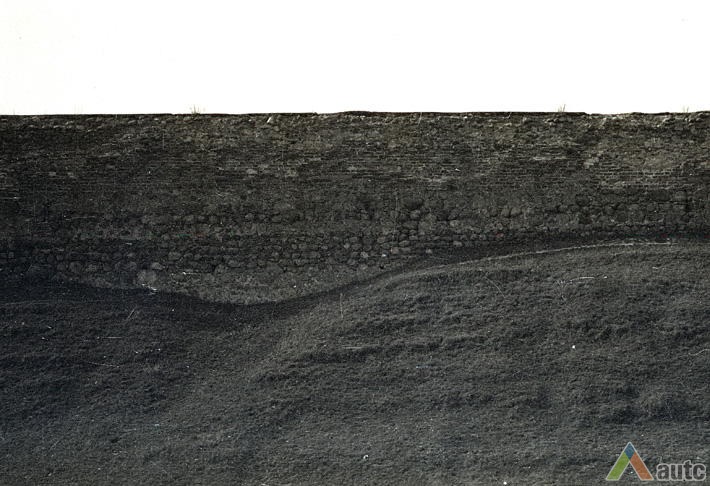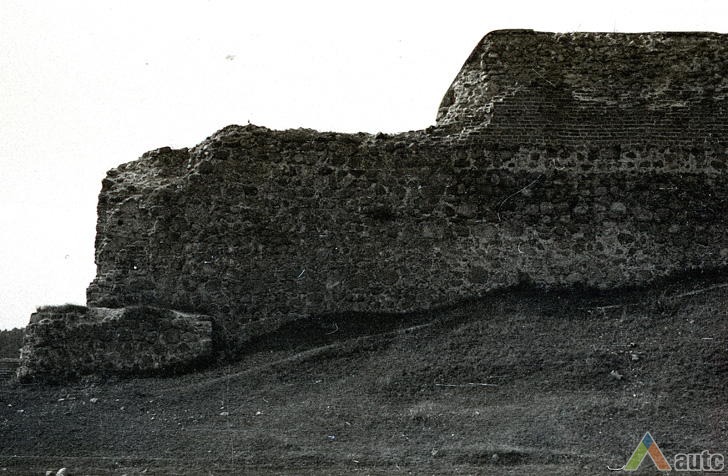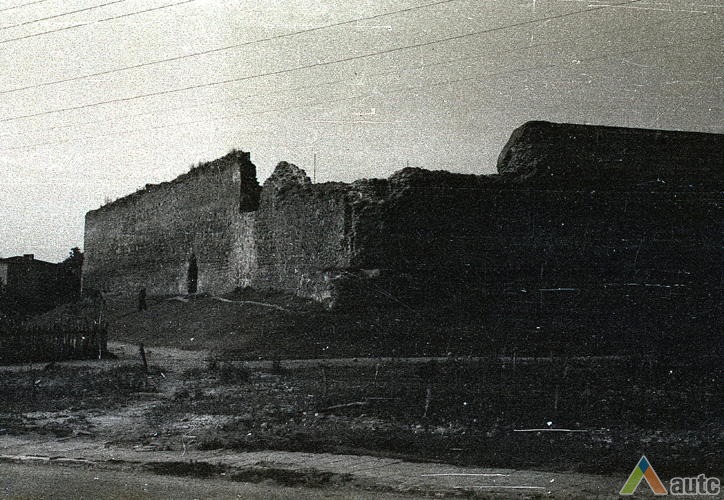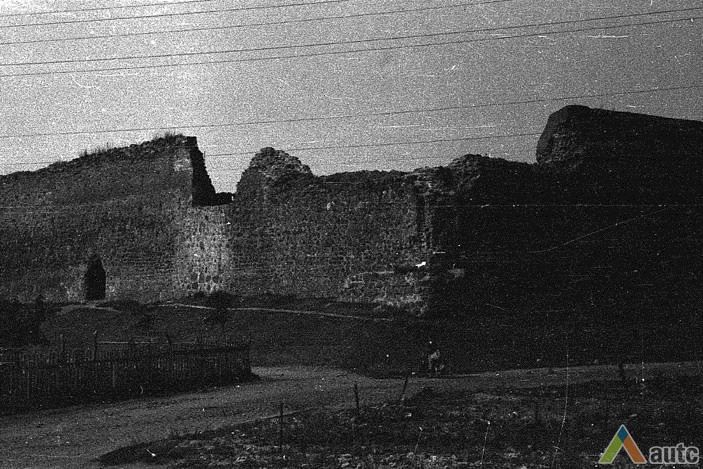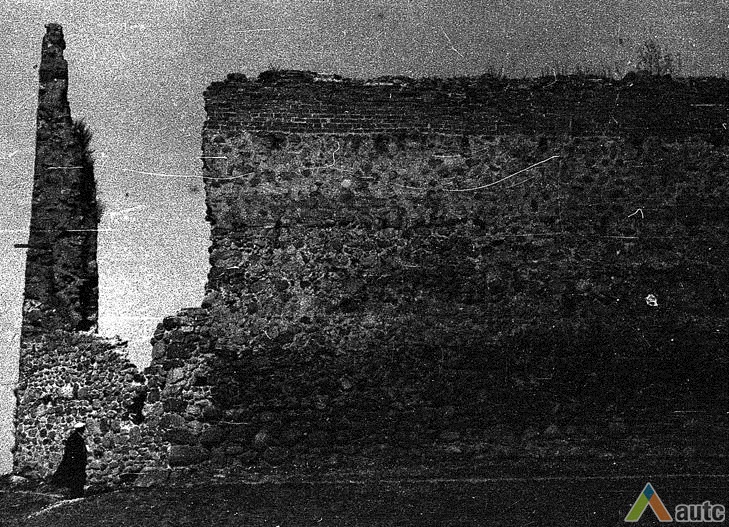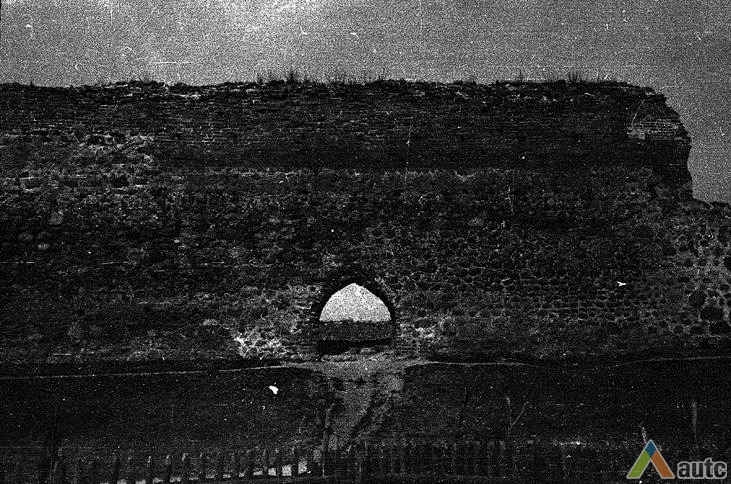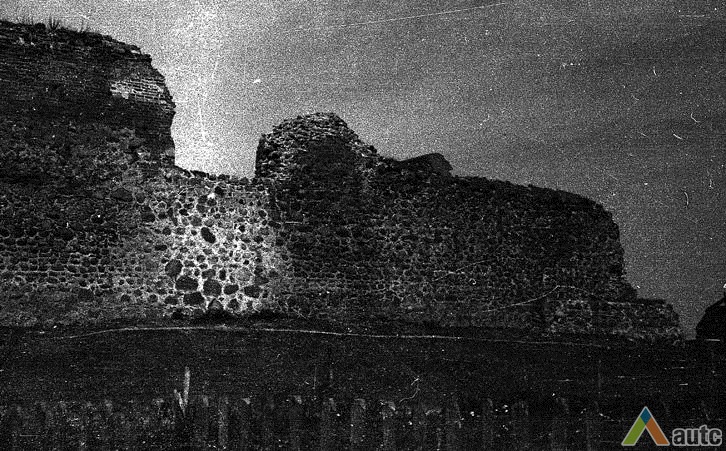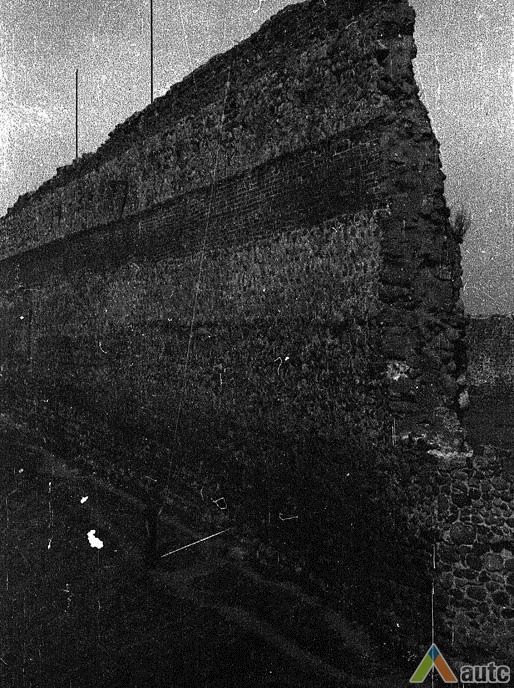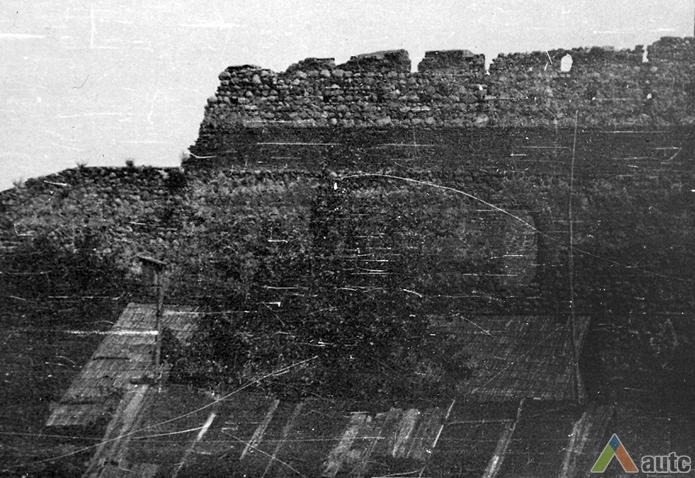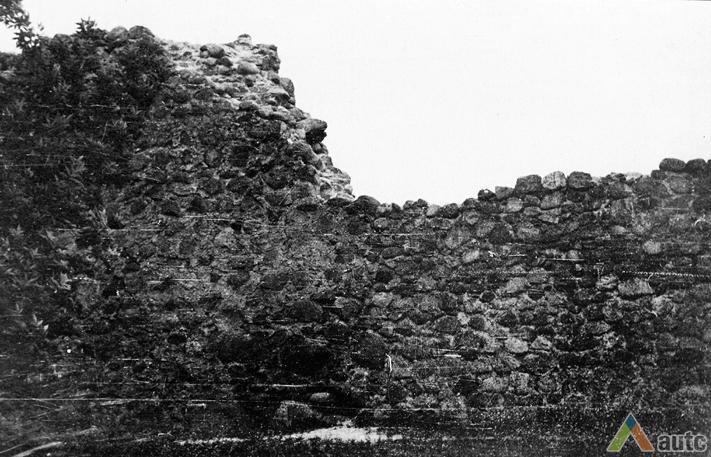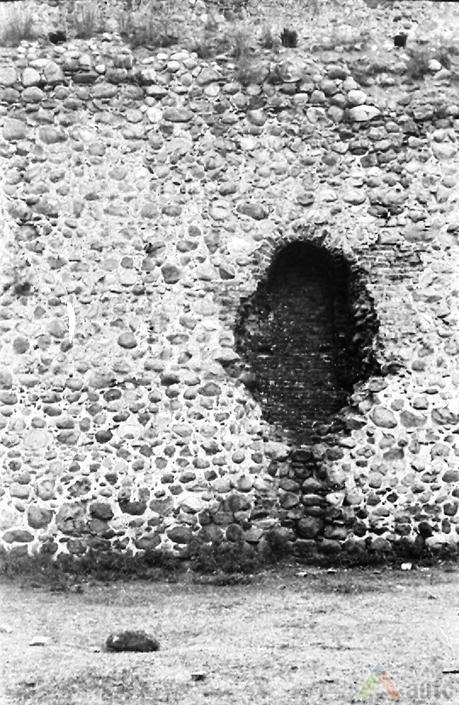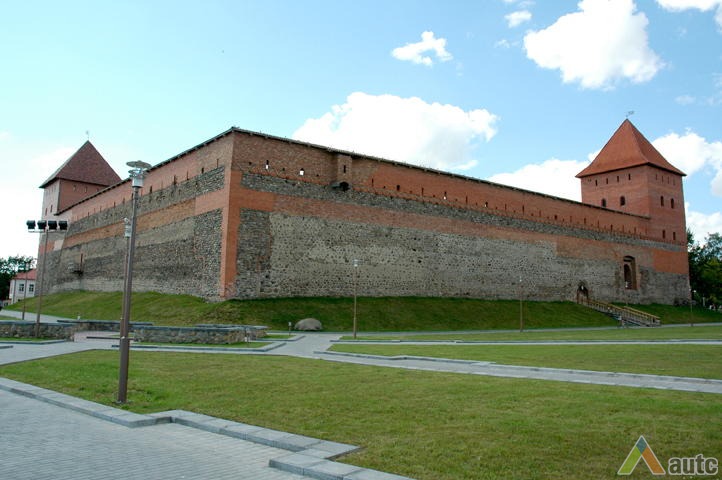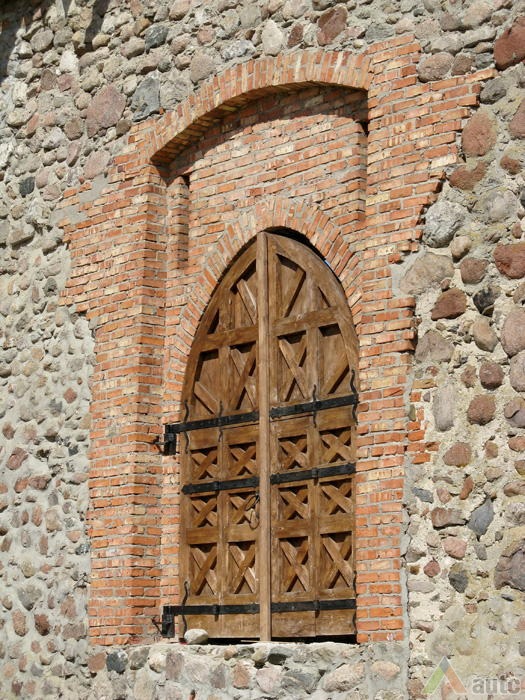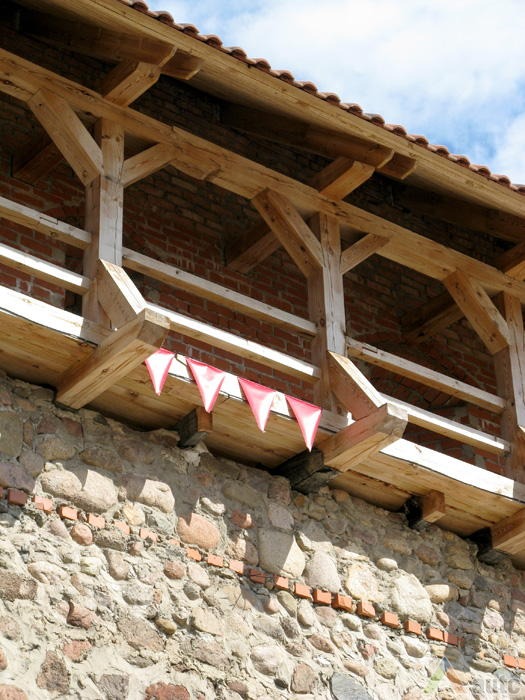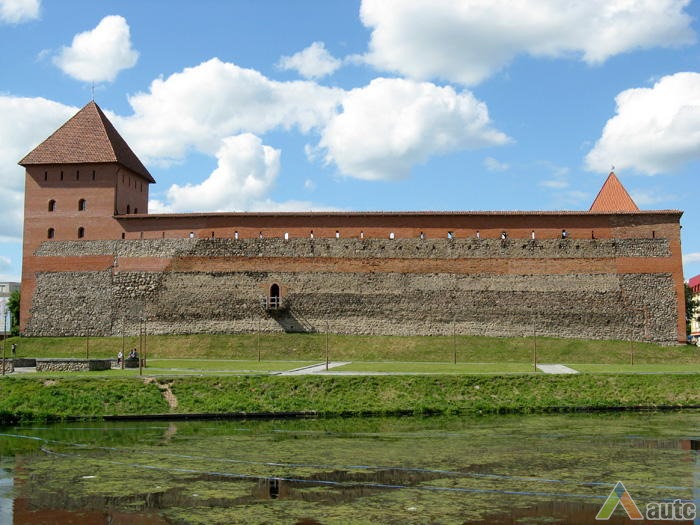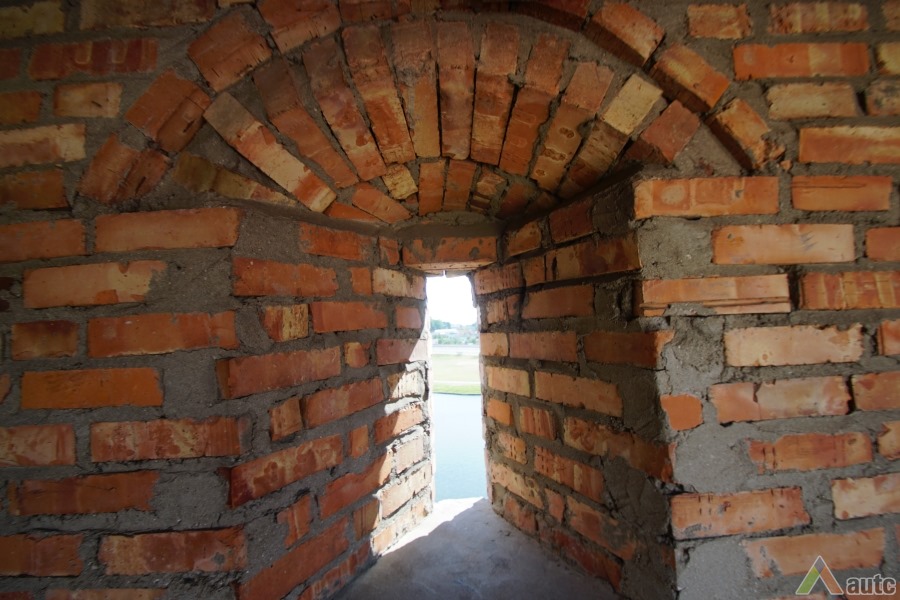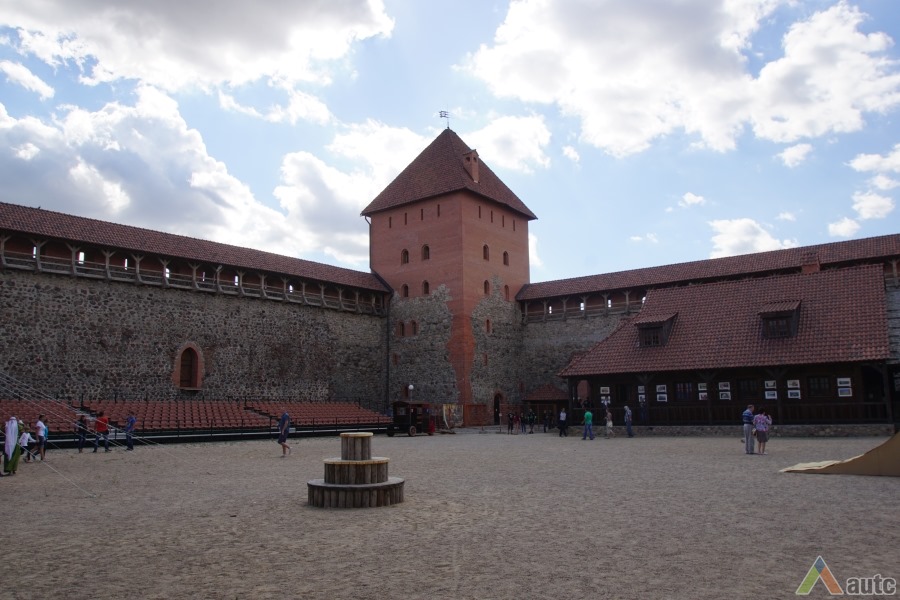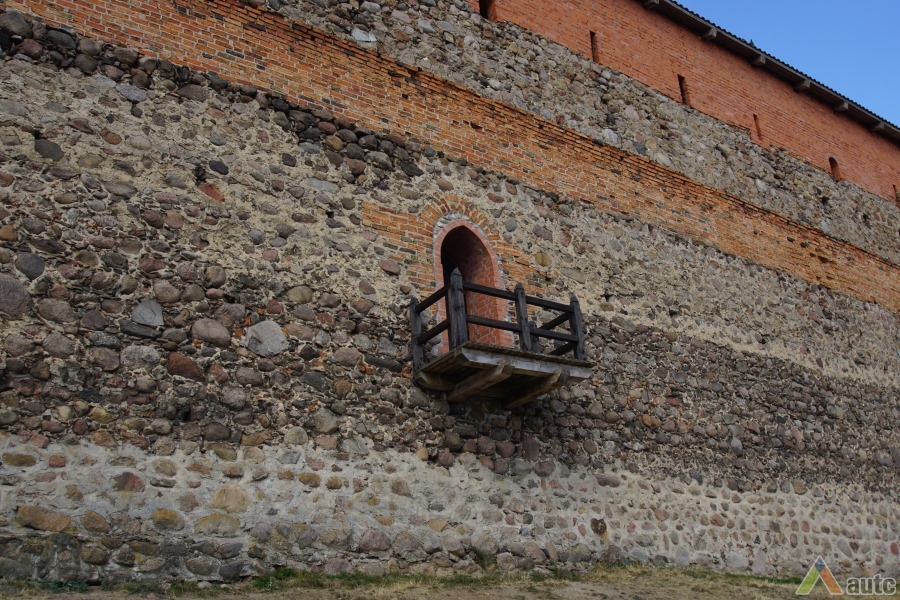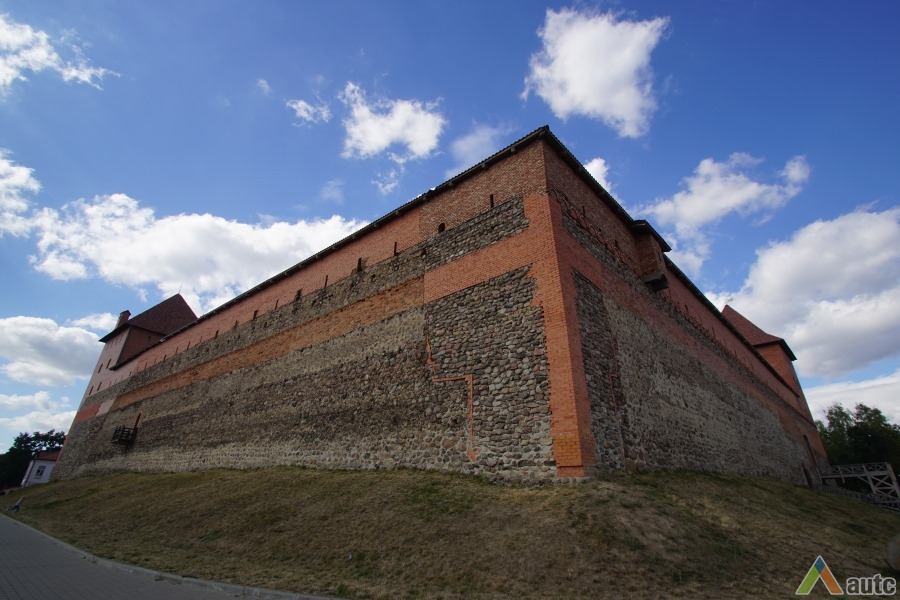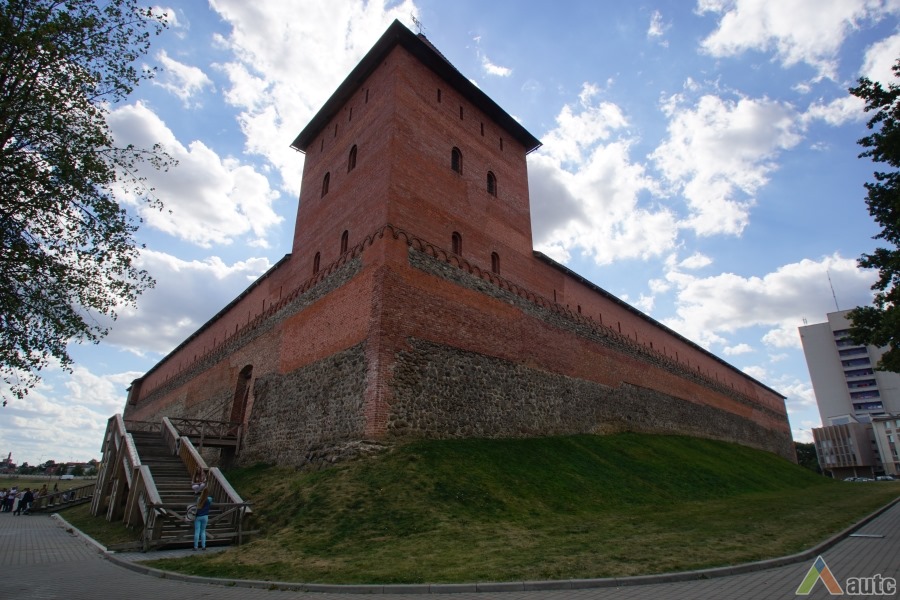![<p style="text-align: justify;">Lida Castle (1320s - 1330s) is one of the earliest brick castles in the Grand Duchy of Lithuania (GDL). Along with the castles of Kaunas, Kreva and Medininkai, the castle belongs to the type of the early enclosure castles owned by the dukes of the GDL (state-owned castles). The castle was square in plan. It covered the area of 0.6 ha and was situated on a rather low 5-6 m high artificial hill typical of lowland castles in a swampy area - at a confluence of the Lida and Kamenka rivers. From the north, the two rivers were linked by a 20 m width moat, creating an impression of an island castle. </p>
<p style="text-align: justify;">The castle is an irregular square in layout (north wall - 93.5 m, west wall - 84 m, south wall - 80 m, east wall - 83.5 m); the walls are about 12 m high and 2 m thick. The castle had two towers situated on the interior of the castle perimeter - a lower tower in the south-west corner and a taller tower in the north-east corner. Two gates were situated next to the tower in the east wall and one gate - in the south wall.</p>
<p style="text-align: justify;"> In the 14th century, the castle was stormed by the Teutonic Knights for a number of times; only once, in 1384, it was seized and partially ruined. When the conflict between Grand Duke Vytautas and Grand Duke Jogaila erupted in 1392, Grand Duke Vytautas, with the help of the Teutonic Knights, burned down the lower wards and seized Lida castle; the attempts to seize the castle by the duke of Smolensk resulted in failure; the city was burned down by Grand Duke Švitrigaila during the conflict between Grand Duke Švitrigaila and Grand Duke Sigismund Kęstutaitis in 1434 but the castle did not suffer any damage. By the will of the duke of the GDL, the castle once became a refuge to the khans driven from the Golden Horde. In 1655, the castle was seized by the Cossacks; in 1659, it was captured by Moscow army. The Swedes seized the city for three times during the Great Northern War (1702, 1706, and 1708); the castle was ravaged as well.</p>
<p style="text-align: justify;">Since then, the castle ruins stood idle, though the castle hosted city court hearings as far back as the 18th century. In the 1794 Uprising, the castle and its grounds saw the battle between the unit of insurgents and tsar troops. In the inter-war period, the castle walls were restored by Polish conservationists. Restoration and reconstruction works have been carried out at the castle since 1982. There is a small museum at the castle; it also hosts cultural events. The castle walls lived through a number of historical events, which attract tourists from across the globe to come and look around.</p>
<p style="text-align: justify;">Lydos pilis [interaktyvus]. In <em>Magnus Ducatus Lithuaniae</em> [žiūrėta 2010 m. spalio 21 d.]. Prieiga per internetą: <<a href="http://www.mdl.lt/wp-content/upload/lyda_pilis.pdf">http://www.mdl.lt/wp-content/upload/lyda_pilis.pdf</a>></p>
<p style="text-align: justify;"> </p>](https://autcserver.baco.lt/api/images/heritage/142AE0C1-E74A-4B94-910B-80850A8B4DF2)
Lida Castle (1320s - 1330s) is one of the earliest brick castles in the Grand Duchy of Lithuania (GDL). Along with the castles of Kaunas, Kreva and Medininkai, the castle belongs to the type of the early enclosure castles owned by the dukes of the GDL (state-owned castles). The castle was square in plan. It covered the area of 0.6 ha and was situated on a rather low 5-6 m high artificial hill typical of lowland castles in a swampy area - at a confluence of the Lida and Kamenka rivers. From the north, the two rivers were linked by a 20 m width moat, creating an impression of an island castle.
The castle is an irregular square in layout (north wall - 93.5 m, west wall - 84 m, south wall - 80 m, east wall - 83.5 m); the walls are about 12 m high and 2 m thick. The castle had two towers situated on the interior of the castle perimeter - a lower tower in the south-west corner and a taller tower in the north-east corner. Two gates were situated next to the tower in the east wall and one gate - in the south wall.
In the 14th century, the castle was stormed by the Teutonic Knights for a number of times; only once, in 1384, it was seized and partially ruined. When the conflict between Grand Duke Vytautas and Grand Duke Jogaila erupted in 1392, Grand Duke Vytautas, with the help of the Teutonic Knights, burned down the lower wards and seized Lida castle; the attempts to seize the castle by the duke of Smolensk resulted in failure; the city was burned down by Grand Duke Švitrigaila during the conflict between Grand Duke Švitrigaila and Grand Duke Sigismund Kęstutaitis in 1434 but the castle did not suffer any damage. By the will of the duke of the GDL, the castle once became a refuge to the khans driven from the Golden Horde. In 1655, the castle was seized by the Cossacks; in 1659, it was captured by Moscow army. The Swedes seized the city for three times during the Great Northern War (1702, 1706, and 1708); the castle was ravaged as well.
Since then, the castle ruins stood idle, though the castle hosted city court hearings as far back as the 18th century. In the 1794 Uprising, the castle and its grounds saw the battle between the unit of insurgents and tsar troops. In the inter-war period, the castle walls were restored by Polish conservationists. Restoration and reconstruction works have been carried out at the castle since 1982. There is a small museum at the castle; it also hosts cultural events. The castle walls lived through a number of historical events, which attract tourists from across the globe to come and look around.
Lydos pilis [interaktyvus]. In Magnus Ducatus Lithuaniae [žiūrėta 2010 m. spalio 21 d.]. Prieiga per internetą: <http://www.mdl.lt/wp-content/upload/lyda_pilis.pdf>
